#137 Attack vs Defense Game to Train Decision Making
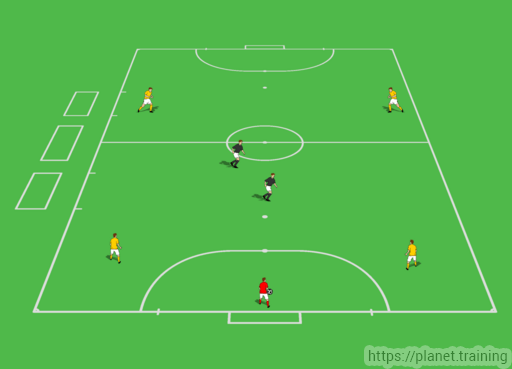
Click Here to Listen to Podcast
Continue reading
Click Here to Listen to Podcast
Continue reading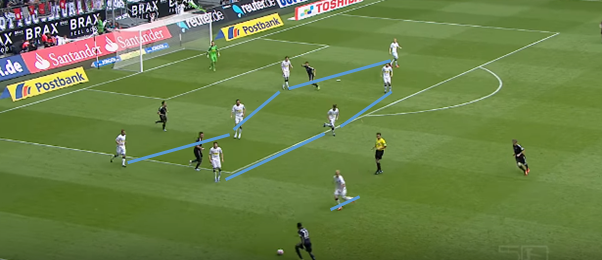
By Alex Trukan Passing backwards is generally considered by many fans as boring and rather pointless. Although, going backwards is probably more common for possession tiki-taka type of tactics, it is still considered as undesirable, with the highest priority to go forwards whenever possible. Completely agreed, however, regardless of the team’s style of play, a
Continue reading
By Alex Trukan Transition to attack starts when a team is still defending and out of possession. Their defensive strategy and shape will influence the options available upon winning the ball back. Not only the pressing line will influence the distance to the opposition goal when the ball is won but also the amount of
Continue reading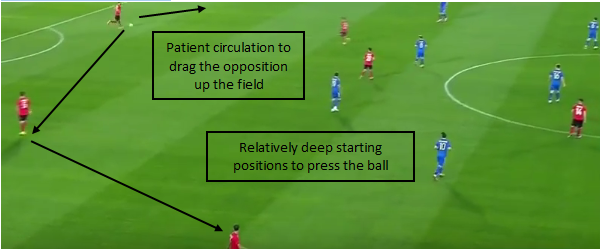
By Alex Trukan It can be often witnessed when a team plays the ball endlessly between the centre backs and across the back line. Fans often associate this situation with a boring moment of the game and encourage the team to play forwards earlier. However, there is often a purpose to this patience way of
Continue reading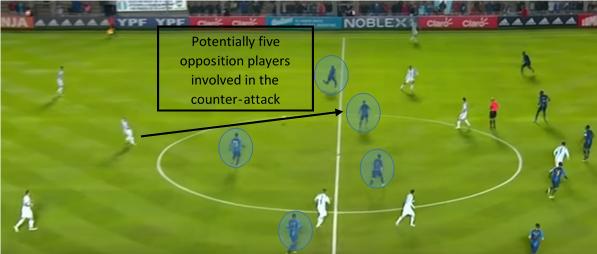
By Alex Trukan The game of football is usually divided into three phases – attacking, defending and transition (offensive and defensive). Although this way of looking at it is very useful, it also has some limitations. Most importantly, those three phases of the game are interconnected and linked to each other. During the match, the
Continue reading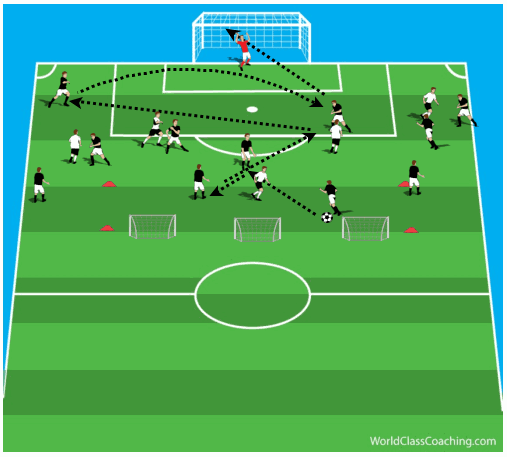
By Chris Kouns USSF A License (USSF Coaching Education Instructor) – NSCAA Premier Diploma (NSCAA Coaching Education Associate Staff Coach) – Head Women’s Soccer Coach – Georgia Gwinnett College Set Up: On each side of the 18 yard box create a triangle of cones. Put players on the three cones on each side of the
Continue reading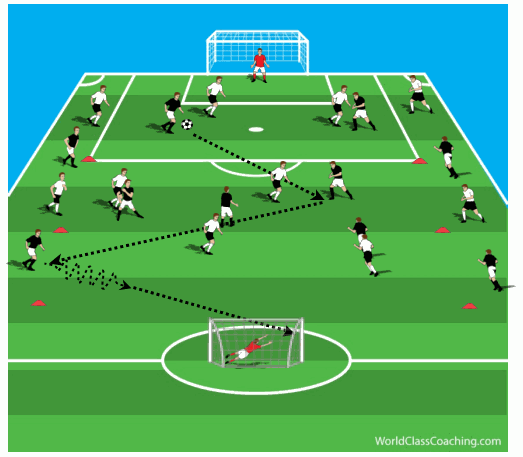
By Chris Kouns USSF A License (USSF Coaching Education Instructor) – NSCAA Premier Diploma (NSCAA Coaching Education Associate Staff Coach) – Head Women’s Soccer Coach – Georgia Gwinnett College Set Up: Set up cones in a “T” formation with approximately 8 yards between them. On the opposite side of the cones place two small flag
Continue reading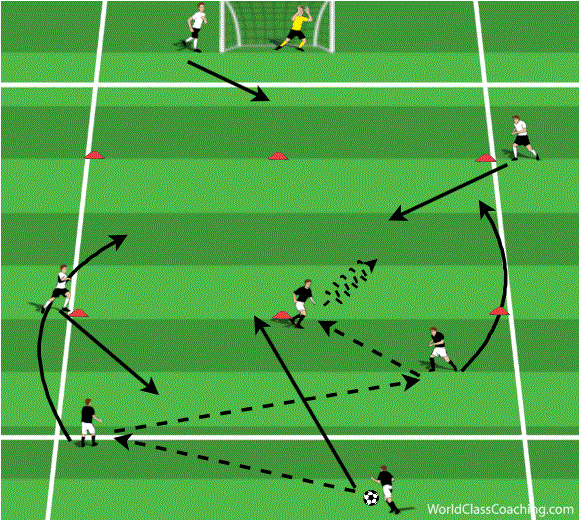
By Chris Kouns USSF A License (USSF Coaching Education Instructor) – NSCAA Premier Diploma (NSCAA Coaching Education Associate Staff Coach) – Head Women’s Soccer Coach – Georgia Gwinnett College In these activities we are working on players recognizing and exploiting numbers up situations. Set Up: There are two 10 x 10 grids placed back to
Continue reading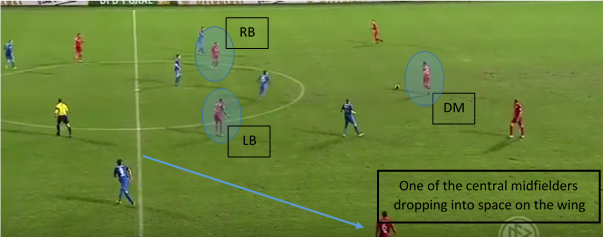
By Alex Trukan Full backs’ position has evolved over the years. Involvement of full backs in attack seemed very unorthodox several years ago, whereas now it is considered as a minimal standard required. Recent years has seen this position evolving even further. Primary example includes Bayern Munchen under Pep Guardiola, which introduced full backs playing
Continue reading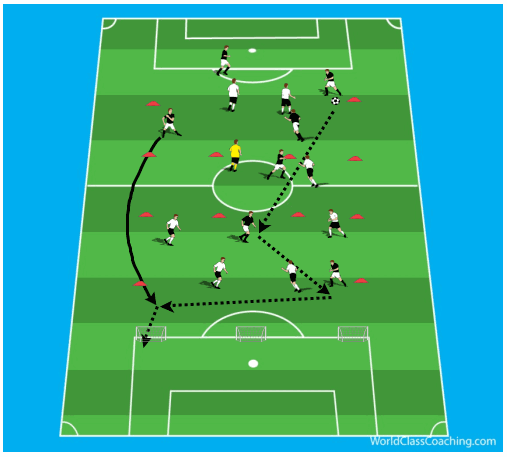
By Chris Kouns USSF A License (USSF Coaching Education Instructor) – NSCAA Premier Diploma (NSCAA Coaching Education Associate Staff Coach) – Head Women’s Soccer Coach – Georgia Gwinnett College Set Up: Create 3 x 3 grids and have three players in each grid. Two players will have balls at their feet while one will be
Continue reading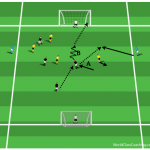
By Sean Pearson Area Size: Central Area: 30 x 40 yards, Channels 5 x 40 yards Teams: 5 v 5 + 2 Time: 15 Minutes Objectives To understand when to switch the ball To relate the switch to the formation 4-3-3 To understand how to switch depending on opposition player positioning This is a practice I have adapted from when
Continue reading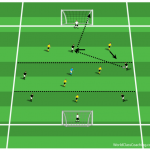
By Sean Pearson Area Size: Central Area: 15 x 30 yards, End Zones 10 x 30 yards Teams: 6 v 6 + 1 Time: 15 Minutes Objectives To move the ball through all 3 zones via passing or dribbling Make the field as big as possible Understand the best option to move the ball forwards depending on the
Continue readingBy Stevie Grieve
In the Champions League Semi Final between Barcelona and Bayern Munich, the score was decided by one player's ability to find space when there is little available, despite Bayern Munich’s best attempts to control the space around Lionel Messi, particularly in the 1st half.
For the 1st half, Bayern played wide and looked to enter the attacking phases from the CF drifting wide then playing 1v1 on the side and attacking from there, while Barcelona played more direct from central zones in transition, looking to use Suarez’ tenacity behind the Bayern defence, or with lots of circulation which kept the ball and looked for a breakthrough from quick combinations around the goal or in 1v1 play.
The 2nd half changed for Barcelona when Iniesta, Neymar, Messi and Rakitic all played directly through the channels, looking to cut inside and combine with centrally based players; Suarez or Neymar on the last line of the defence, with Alba and Alves staying deeper and making late runs outside the play.
The main danger was always through an ‘inverted’ player, cutting inside, particularly Messi from the
Continue readingBy Stevie Grieve
Atletico Madrid may not regain the Spanish League title that they earned last season, but Diego Simeone has kept them competitive in 3 competitions with arguably a weaker starting XI than last season, losing Goalkeeper Thibaud Courtois, Left Back Felipe Luis and Talismanic Striker, Diego Costa all to Chelsea. Simeone replaced these players with players of similar playing profiles;
Jan Oblak and Guillherme Siqueirha from Benfica, Mario Mandzukic from Bayern Munich, while adding mobile attacker Antoine Griezmann from Real Sociedad. This has given them a team with similar profiles in each area from last season while arguably a weaker team, other additions such as creative midfielder Cani, have given them more options Siqueirha is an attacking left back, Manduzkic is the
Continue readingBy Stevie Grieve
Lyon have been this season's ‘surprise’ package in Ligue 1, with a team of cast-offs who have proved unsuccessful at other clubs and academy graduates, staying in the top 6 would be the realistic aim and top 3 would’ve been ambitious. As it has unfolded, Lyon have been one of the most attack minded teams in the league, scoring 60 goals in 31 games, and having the best goal difference in the league.
Some of the success has come from the emergence of Nabil Fekir and the continued improvement year on year of Alexandre Lacazette, the return to form of Yoann Gourcuff, and a stable 4-4-2 diamond formation, with attacking full backs providing the width when the dual strikers are more central.
Lyon use a fluid formation and one of the reasons for this is the above mentioned Full Backs, the fluidity of movement from the strikers and how they stretch the field when in possession.
Basic Shape; 4-1-2-1-2 becoming 4-3-3 becoming 2-1-4-3
Both FBs (black circles) are very high, on the line of the
Continue readingWhen you coach young players, it can be difficult to know where to start. Some coaches will focus onlyon developing technique without teaching the key elements of the game. But this can just stunt a young player’s development. When they don’t understand the game’s core principles, they won’t know where they need to be and why so they can use their technique to create chances to score. To solve this age old problem, two experts in youth coaching have created Coaching the Principles of Soccer – Attack and Defense. This book presents a structured approach to developing an understanding of how the game is played and to provide them with a solid base on which they can develop.
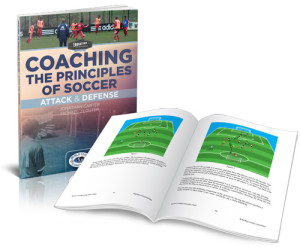
The drills in Coaching the Principles of Soccer – Attack and Defense will
Continue readingThis weeks posts is from the May edition of WORLD CLASS COACHING magazine that is available exclusively to Member Drills Database subscribers. The training session was contributed by Kevin Thelwell who is the Head of Football Development and Recruitment for Wolverhampton Wanderers. Reed has been working with professional clubs for more than 13 years. He
Continue readingWelcome to the FineSoccer Drills Newsletter. Today’s featured activity works on switching the point of attack and getting to goal. Start with a team attacking with a 3-3-2 and a team defending the goal with a keeper and playing a 2-2-1 This is an unrestricted scrimmage except the teams are put into these formations. If
Continue readingBy Waleed Zaghloul
Counter attacks are a great weapon in football and have been used by numerous teams over the years to great effect. This weapon is not utilized effectively by many youth teams in the US, possibly because it is difficult to teach. As coaches, before we can coach counter attacks, it might be useful to analyze the components of most successful counter attacks. In this article, we will dissect counter attacks and attempt to identify their main components and how they are carried out.
This article references this video clip made up of various examples of classic counter attack situations.
First, players (and coaches of course) need to identify when counter attacks are possible. There are two main scenarios, one from open play and one from set-pieces. From open play, it is usually a bad or an intercepted pass from a team that is attacking in numbers. From set-pieces, it is usually
Continue readingWelcome to the FineSoccer Drills Newsletter. Today’s featured activity works on possession, spacing and switching the point of attack. There are many other activities such as this one in the book Improving Your Team’s Possession Play.
This game can be played with various numbers and on with different size fields. You would use the numbers you have available and the size of the field would depend both upon the numbers of players as well as what you want to emphasize.
In the example below, we are using 6 v 6 with 1 neutral player. The field is 40 x 40 and there is a 5 yard square in each corner.

The neutral player is on whichever
Welcome to the FineSoccer Drills Newsletter. Today’s featured game works on movement off the ball and the use of depth in the attack. You can see similar type games in the book Brazilian Training Games; 102 Small-Sided Games, Exercises and Drills.
There is a tendency for forwards to come back far to get the ball and while their eagerness to be involved is commendable, the problem is it makes it difficult to stretch the field in the attack. This makes it easier for the opponent to compress the field when defending and eliminates a lot of space to work with,
This game is on a field that is 50 x 30 (size can vary depending upon the number of players on the field) with two teams of 6. Use flags (or poles) to make a goal 10 yards in from each end line.
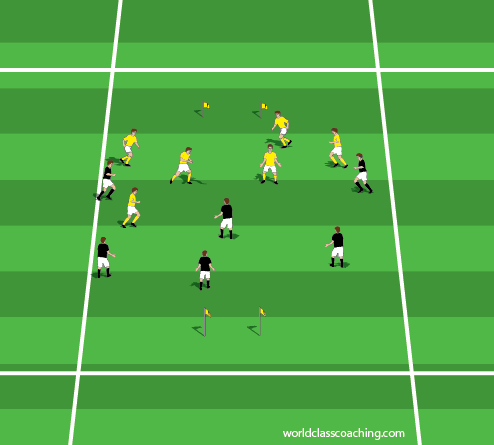
This is a regular game with the exception that a team can score from